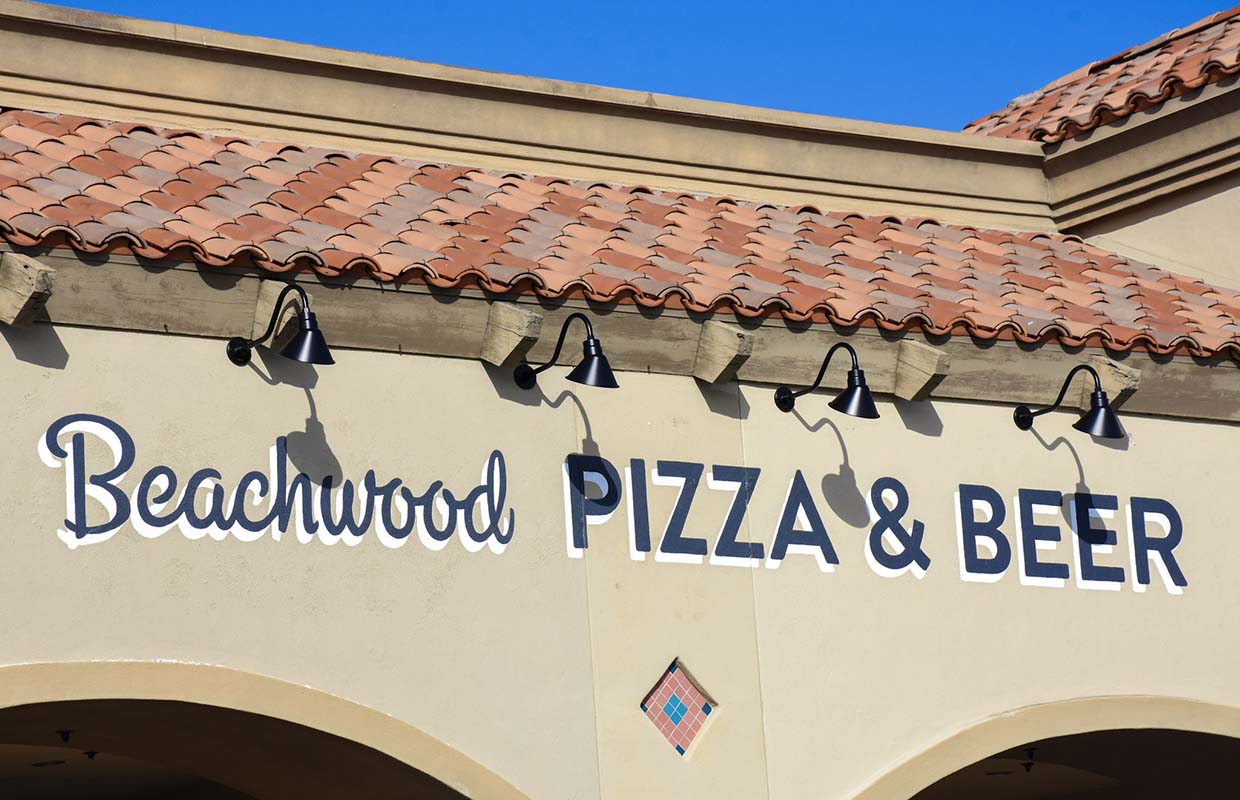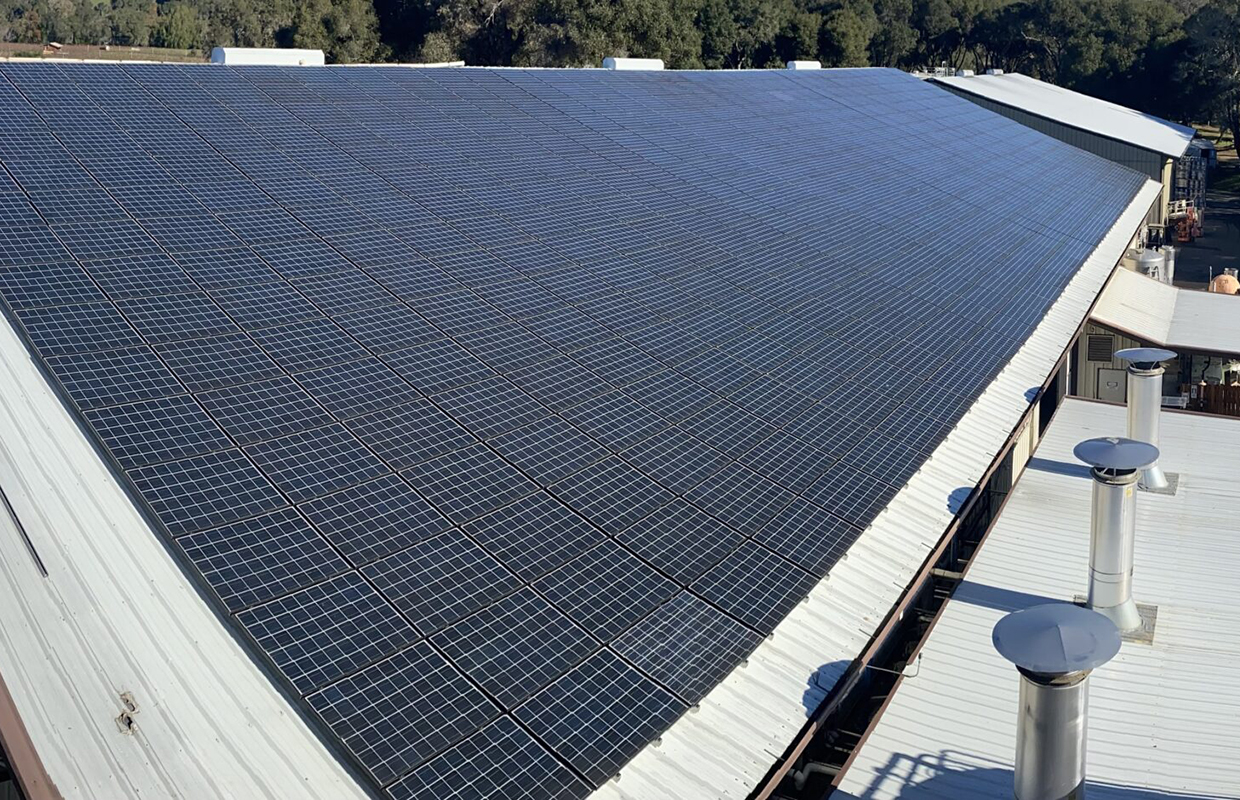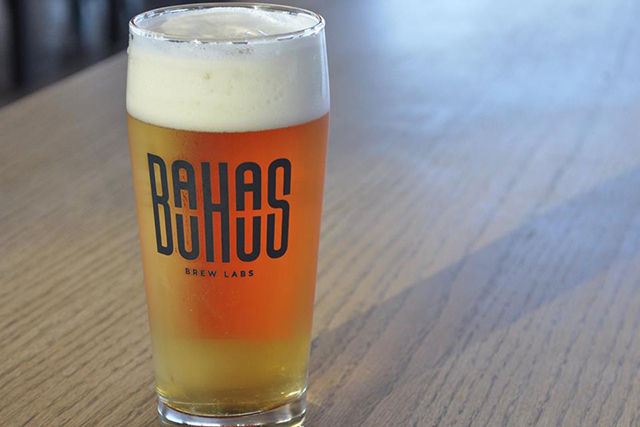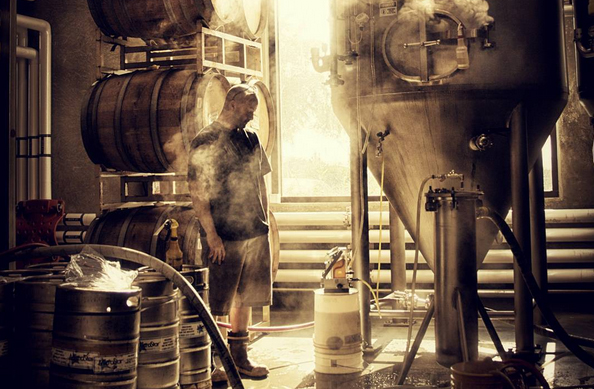
This is a part of a continuing series of Q&As with members of the brewing community from across the US. Brewer Magazine will share business and personal insights from Brewmasters, Head Brewers, Brewing Managers, Sales Directors, QCQA Managers and others each weekend to help you get to know each other better in the industry and learn more to better develop your own brand.
Gabriel Gordon, Lena Perelman, and Julian Shrago, owners, Beachwood Brewing — Long Beach, California
In December, Beachwood Brewing opened the doors to a brand-new restaurant venture in Huntington Beach, California: Beachwood Pizza & Beer. Housed in a new 3,000 square-foot space with cheerful murals, light wood paneling, and its trademark blue-green touches, Beachwood, in its first foray away from Southern-inspired cuisine, will turn out custom 16” sourdough pies, alongside an evolving menu that includes signature appetizers, salads, sandwiches and its craft beer.
But what Beachwood is most excited about, is its pizza dough, which has been carefully cultivated over the past several months with Head Chef Waldo Stout. Stout, a passionate baker and cook who sharpened his culinary skills at several much-admired Los Angeles kitchens, worked closely with Beachwood’s team to develop a unique, intricate dough that combines the principles and techniques Stout learned in the craft bakery setting with his experience making pizza.
Brewer gave the Beachwood staff an opportunity to share their insights to the new taproom location in this week’s Brewer Mag Q&A.
BREWER: How will the new Huntington Beach location be alike to your home base and what are you bringing new to make it unique?
BEACHWOOD: Much like our original pub, we’ll continue to provide a casual, friendly environment with great service and staff and a wide variety of styles of beer from all of our brewing facilities. What’s new, is our Pizza program! We’re serving handcrafted sourdough pizzas and making them unique by milling our own flour, using a Blendery sour beer culture to ferment the dough, and incorporating a water profile that works well for that culture that we developed and produce at our local brewing facility.
BREWER: What sort of research and internal discussion was done to pick Huntington Beach as your next location?
BEACHWOOD: We had been looking for a new customer facing location in the northern part of Huntington Beach for a while. We live on this side of town and really wanted to create something that we felt was missing in the area.
BREWER: How is this new spot changing your growth plans for production? Do you feel it will make changes in other areas, like distribution or retail/chain plans?
BEACHWOOD: This new location allows us to continue to have a customer facing presence in Huntington Beach and still expand our current production facility. We have already expanded the space three times to keep up with demand and we cannot make any more beer without stealing some space from the tasting room at that facility. That expansion will allow us to keep up with our own internal demands, but also the demands of our local distribution partner.
BREWER: What sort of pitfalls did you plan for during the process of build out (expected delays and costs, etc.)? How do you prepare and put foresight to it?
BEACHWOOD: While we always plan to be around 10% over budget, we could not have picked a worse time than 2021/2022 to plan and build a full-service restaurant. Plan check took close to eight months as Covid would cause shutdowns or delays within the building department. Once we were permitted, the price and lead time of materials and equipment were all over the place, so trying to schedule subcontractors was really hard because they are so dependent on one another to finish their part. If something failed to arrive on time that could mean losing a scheduled sub down the line for a couple of weeks since they are juggling other jobs. Lead times on some of our main kitchen equipment was upwards of nine months. We ended up well over the 10% variance on our budget.
BREWER: How has the pandemic altered your thought process for planning this new space in terms of indoor capacity, outdoor space, employee interaction with consumers, your online presence and other things that weren’t at the forefront of thought a few years ago? How does it affect profitability plans?
BEACHWOOD: As far as indoor versus outdoor capacity planning, nothing changed for us. We have always wanted as much of our seating to feel as outdoor as possible. Being coastal Southern California, the weather is (almost!) always patio weather, so as often as possible we replace all windows with garage doors so that even when you are “inside” it’s still open and airy. Employee interaction with customers has changed. We have gotten to an elevated form of counter service for the dining room and only kept full service at our bars. This came out of the need to reduce staffing levels as well as contact during the pandemic. We ended up finding that it worked well for us and kept it. We also expanded online ordering and direct-to-consumer shipping during the pandemic; it’s something we continue to use to allow out-of-area customers (in California) instant access to our freshest beers.




Be the first to comment